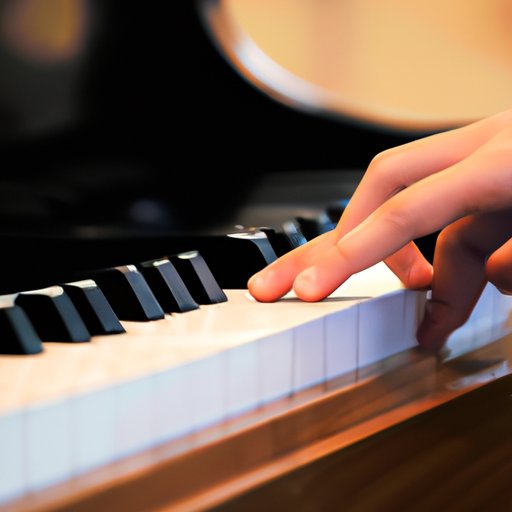
I. Introduction
The piano is an instrument that has captured the hearts of many music enthusiasts for centuries. From classical compositions to modern pop hits, the piano has effortlessly weaved its way into various genres of music, making it a versatile instrument with a timeless appeal. If you’re someone who has always been fascinated by the idea of playing the piano but doesn’t know where to start, then this article is for you. In this beginner’s guide to playing the piano, we will explore various tips, techniques, and strategies to help you unlock your inner musician and become a skilled pianist.
II. Piano Lessons 101: What You Need to Know Before Sitting Down at the Keys
Before delving into the techniques and strategies for playing the piano, it’s essential to understand the basics. For beginners, it’s crucial to have the appropriate posture and position when playing the instrument. Proper posture involves sitting up straight with your feet planted firmly on the ground while keeping your elbows relaxed and close to your body. When it comes to the components of a piano, the keys and pedals are the most important. The keys are what produce the sound, while the pedals control the resonance and sustain of the notes. Understanding these basic elements will give you an advantage when starting your piano journey.

III. Unlocking Your Inner Mozart: Tips and Techniques for Learning Piano
Learning how to play the piano is a process that requires patience, dedication, and lots of practice. Some essential techniques for beginners include proper finger placement and hand positioning, which can prevent injuries and increase efficiency while playing. Additionally, developing the skill of reading music sheets and identifying notes quickly and accurately is essential for becoming a proficient pianist. Understanding concepts such as rhythm, tempo, and dynamics will bring your music to life and help you express yourself through your playing.
IV. From Chopsticks to Clair de Lune: A Practical Guide to Playing Piano Songs at Any Level
Playing songs on the piano can be a fun and rewarding experience. There are many useful tips and tricks for effectively practicing and mastering songs, including finger exercises and hand stretches. For beginners, it’s essential to start with simple songs and gradually increase the difficulty level. Practicing regularly and devoting time to learning and perfecting each section of a song is vital for success. Whether you’re playing “Chopsticks” or “Clair de Lune,” the key is to practice consistently and with intention.
V. 10 Steps to Mastering Piano Playing: A Comprehensive Guide for Beginners
Becoming a proficient pianist is a long-term goal that requires patience, diligence, and a plan. A step-by-step guide for beginners can be helpful for creating a focused and effective practice routine. By developing good habits such as proper hand and finger positioning, utilizing finger exercises and chord progressions, and practicing songs with a metronome, you can improve your playing skills and eventually master the piano.
VI. Effortlessly Improving Your Piano Playing Skills: Strategies for Becoming a Better Pianist
There are many strategies for continuously improving one’s piano-playing skills, including developing dexterity through proper hand and finger exercises and utilizing technology to assist with practice, such as metronomes and practice apps. Additionally, having a growth mindset and a willingness to try new things and learn from mistakes can do wonders for your progress as a pianist.
VII. The Art of Piano Practice: Proven Methods for Achieving Musical Mastery
Practice is an essential part of becoming a proficient pianist. However, not all practice is the same, and some methods are more effective than others. Using the Pomodoro technique, which involves breaking your practice sessions into manageable chunks with short breaks in between, can help you stay focused and productive. Other techniques such as visualization, practicing slowly, and recording yourself can also be helpful for achieving musical mastery.
VIII. Conclusion
In conclusion, playing the piano is a journey that requires dedication, patience, and persistent practice. By following the tips, techniques, and strategies outlined in this article, you can unlock your inner musician and become a skilled pianist. Remember to start by understanding the basics, developing good habits, and practicing consistently and intentionally. With time, effort, and passion, you can achieve your musical goals and express yourself through the beautiful art of piano playing.





